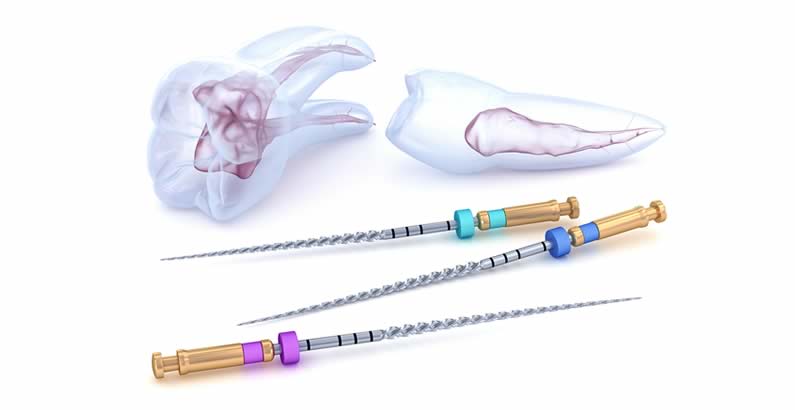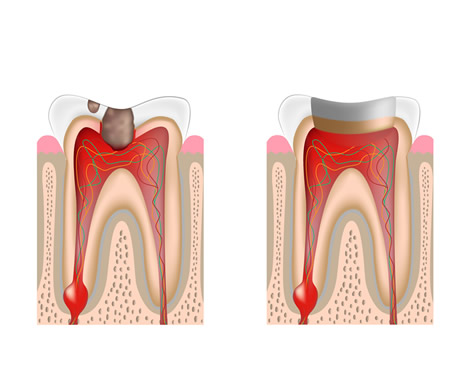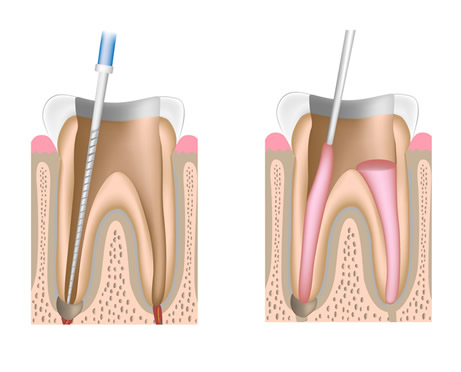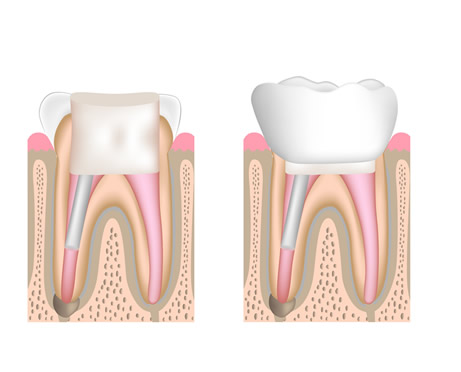What is Root Canal Treatment?
The blood or nerve supply of a tooth (the pulp) can become infected through decay, injury or gum disease and cause pain and even a tooth to abscess. All teeth contain pulps which extend through canals into the roots of the teeth (hence the term root canal). If your pulp is infected Root canal therapy would be the option to alleviate any pain and save the tooth.

What is the process:



An accurate diagnosis will first be made to determine if the tooth requires root canal therapy.
Following this, the tooth is appropriately anaesthetised and isolated with something called a rubber dam, to ensure that the small area worked upon, is kept as sterile as possible and free from bacteria as well as contamination from saliva. The rubber dam may feel strange to begin with, but most patients find wearing it for the duration of the root canal treatment comfortable and reassuring. Following this, a small opening hole is made at the top of the tooth to access the infected pulp.
Once accessed, delicate instruments and disinfectants are gently used to clean out the root canals, remove any exposed and infected nerve. At Clarence Dental practice we use modern flexible rotary files with specialist rotary motors, to ensure that the tooth canals are shaped efficiently. We will only use our root canal files once as well as high-tech apex locators in order to achieve the best outcomes.
Once the root canals have been thoroughly cleaned and disinfected, a customized rubber type material (gutta percha) is placed within the root canal system, to ensure that bacteria cannot re-enter the tooth. The tooth is then restored with either a filling restoration or an onlay/crown if appropriate. Root canal treatment may be completed in a single or multiple visits, depending on the complexity of the tooth.
Without root canal treatment the only other alternative is to remove the tooth and replace it with either an implant, bridge, removable denture or accept the gap.
Clarence Dental Practice in Staines upon Thames
Practice was established in 1988
